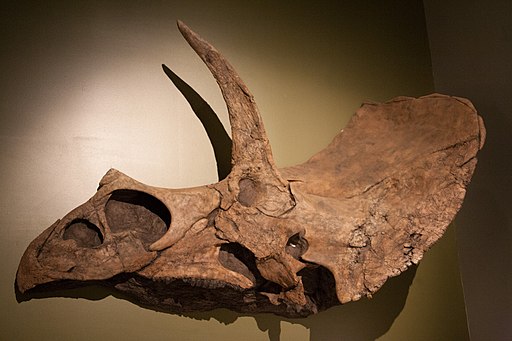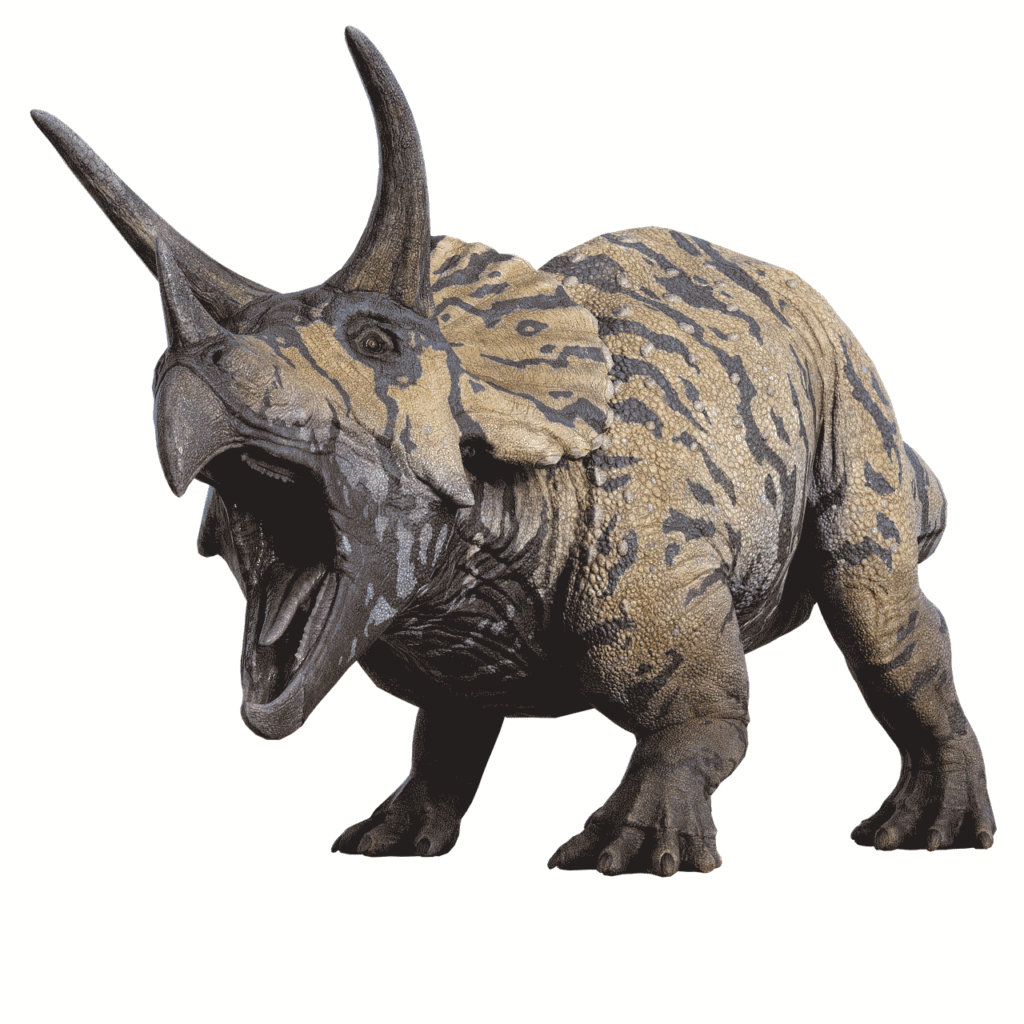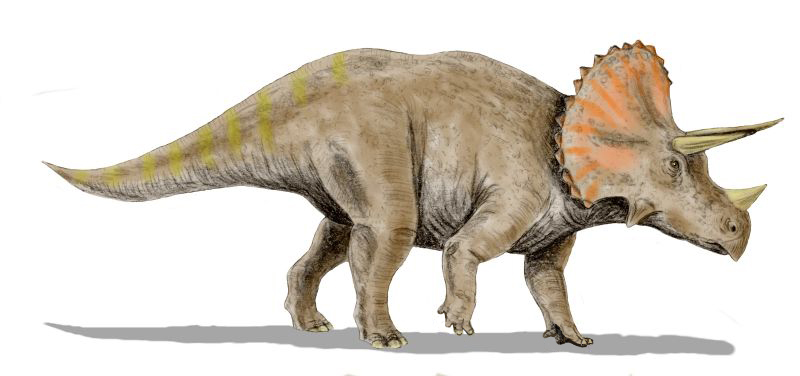The Three-Horned Wonder!
Meet Triceratops, one of the coolest dinosaurs that ever roamed the Earth!
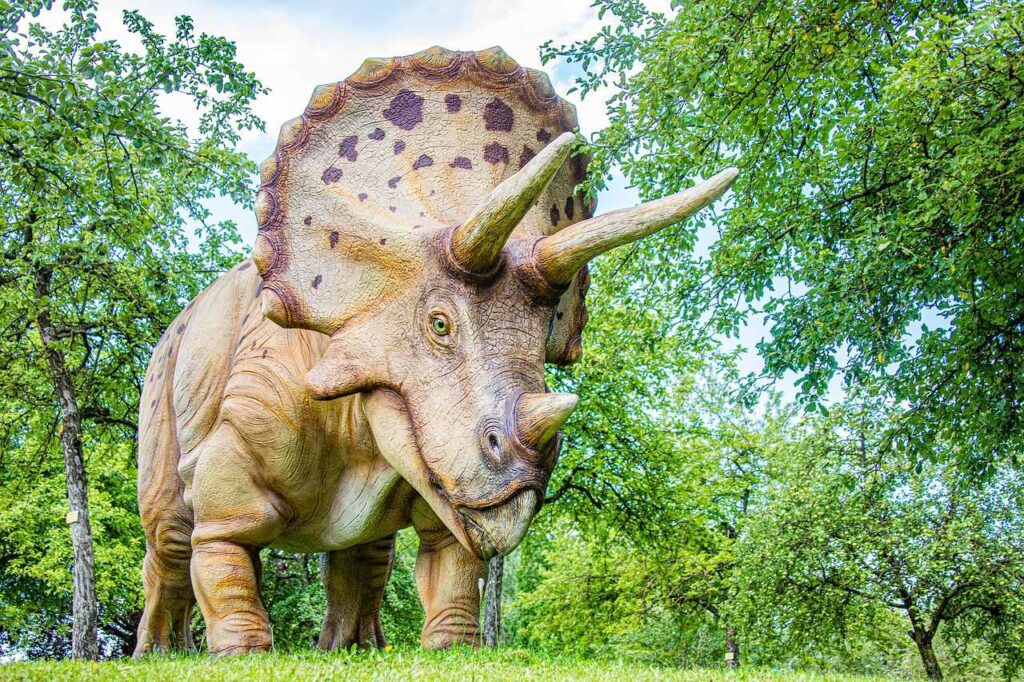
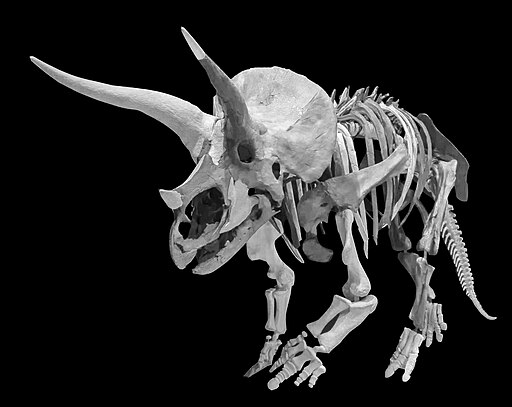
| Meaning | Three-horned face [Tri-cera-t-ops] |
| Pronunciation | try-SER-uh-tops |
| When: | Late Cretaceous (68–66 million years ago) |
| Where: | North America (mostly in regions like Montana, South Dakota, and Wyoming) |
| What: | Ceratopsian (quadrupedal herbivorous dinosaur with a frill and three facial horns) |
| Weight: | Approximately 6–12 metric tons |
| Length: | About 8–9 meters (26–30 feet) |
| Diet: | Herbivorous (ate low-lying vegetation like cycads and palms) |
| Discovered: | First remains found in 1887; named by Othniel Charles Marsh in 1889 |
A Glimpse into the Triceratops
In the lush, sprawling landscapes of the Late Cretaceous period, about 68 to 66 million years ago, roamed one of the most iconic dinosaurs to ever grace our planet: the Triceratops. With its imposing stature, distinctive three-horned face, and grandiose frill, this dinosaur has fascinated scientists and dinosaur enthusiasts alike. Consequently, it has become a symbol of the prehistoric world.
The Triceratops, whose name means “three-horned face,” was a massive herbivorous dinosaur. It belonged to the Ceratopsidae family. Measuring up to 30 feet in length and weighing between 6 to 12 tons, the Triceratops was a formidable creature. Most notably, it had two large horns above its eyes, a smaller horn on its nose, and a bony frill extending from the back of its skull. Thus, it had an almost regal appearance.
Diet and Lifestyle
As a herbivore, the Triceratops feasted on the abundant vegetation of its era. It possessed a beak-like mouth ideal for grasping and cutting through tough plant material. Behind this beak, rows of cheek teeth worked like powerful scissors to shred foliage. The Triceratops likely roamed in herds, moving through the forests and plains. They searched for cycads, ferns, and other prehistoric plants that made up its diet.
The social structure of Triceratops herds remains a topic of ongoing research. Fossil evidence suggests that these dinosaurs might have lived in groups. This would have provided safety in numbers and increased the chances of survival for younger and weaker members.
The Armor of Nature
The horns and frill of the Triceratops have long been subjects of intrigue. These features likely served multiple purposes. They ranged from defense against predators like the fearsome Tyrannosaurus rex to social interactions within their species. The horns could have been used in combat with rivals, while the frill might have been a display feature. Moreover, it could attract mates or establish dominance within the herd.
Interestingly, recent studies suggest that the frill might also have played a role in thermoregulation. Consequently, it helped the dinosaur maintain its body temperature. This multifaceted utility highlights the adaptability and evolutionary ingenuity of the Triceratops.
